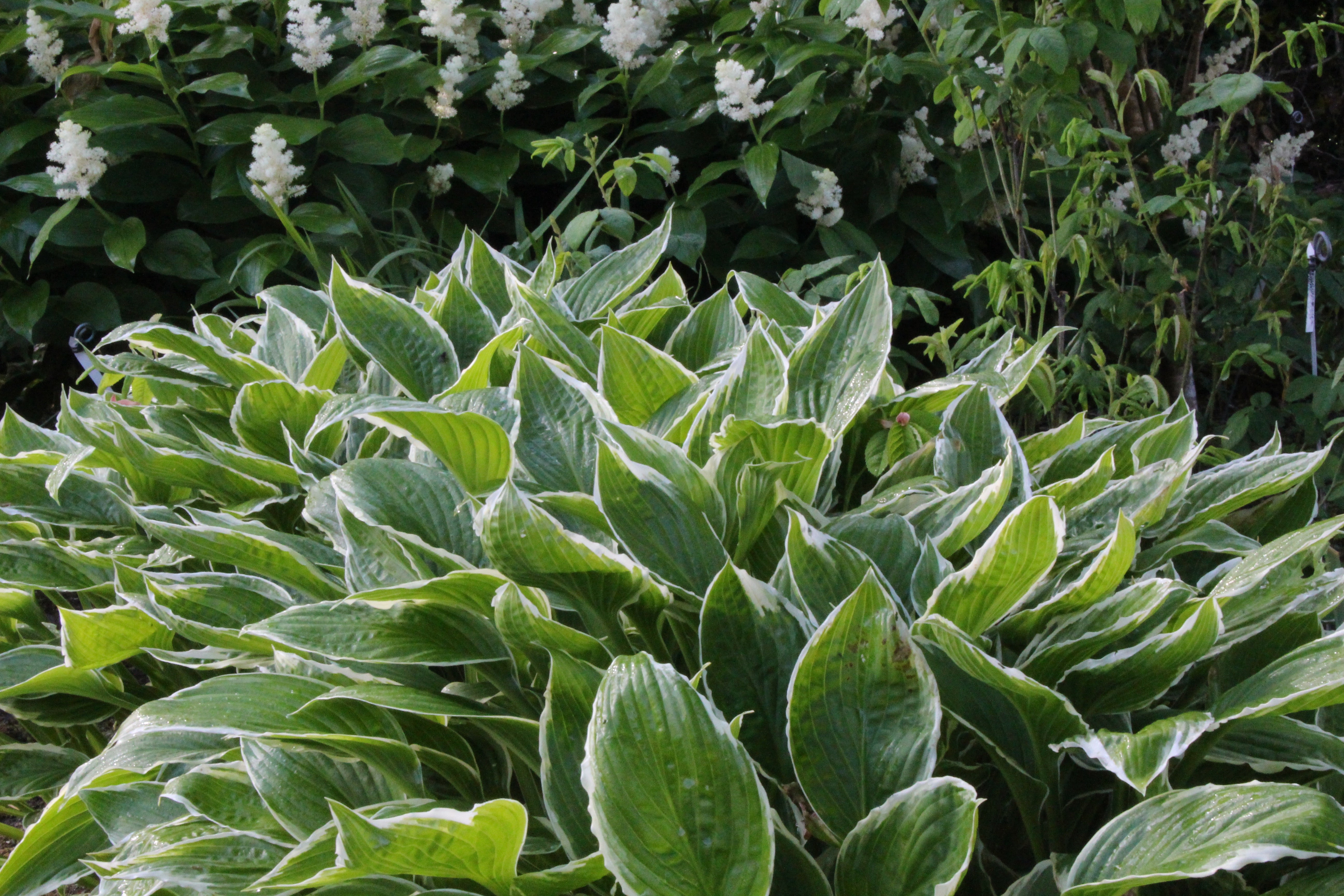Hosta undulata var. albomarginata (v)
Approx. 0.5 litre pot
About this cultivar:
Hosta undulata var. albomarginata (v) is, according to The Hostapedia by Mark Zilis (2009), "...most commonly planted white-margined hosta in the last 100 years."
So it is worth finding out more…..
Schmid (1991) changed the naming of this plant. Previously, it was known as a species by the name of Hosta undulata albo-marginata. As the current name implies, it has now been switched to cultivar status rather than a species. The most common reason for this switch is that there is no evidence that this plant exists now or has ever existed as a plant in the wild. In other words, it is a cultivated plant. The Hosta Journal (1996 Vol. 27 No. 1) states that, "H. 'Undulata Albomarginata' is an interspecific hybrid of H. sieboldii x H. montana "
However I am following the RHS naming convention….
It was probably sold to Thomas Hogg in 1875 in Yokohama, Japan. Thomas Hogg, Jr. was a plant explorer who some credit with being the one to introduce Hosta to America and Europe. Hosta, were reportedly first imported to America in large quantities from Asia to his Manhattan. During the 1860s, he spent time exploring Japan for new plants and, in addition to the Hosta, also introduced Cercidiphyllum japonicum (Katsuratree) and Styrax japonicus (Japanese Snowbell ) to the nursery trade.
Imagine a nursery in Manhattan now!?!? Anyway, love this one. And oldie but a goodie. Does well almost anywhere...hence it has been around a long time!
- Position: Full sun, partial shade, full shade
- Soil: Almost any soil, grows well in Ballyrobert
- Flowers: June, July
- Other features: Grows well in Ballyrobert, Interesting Foliage or Fruit, Suitable for Container, Dappled Shade or Full Shade Loving
- Hardiness: H7 - Hardy in the severest European continental climates (< -20°C), Fully hardy - grows well in Ballyrobert!
- Habit: Clump forming
- Foliage: Deciduous
- Height: 45 - 75 cm (1.5 - 2.5 ft)
- Spread: 75 - 105 cm (2.5 - 3.5 ft)
- Time to full growth: 2 to 5 years
- Plant type: Herbaceous Perennial
- Colour: Green, yellow
- Goes well with: Cornus, ferns, allium
About this genus:
Hosta (hos-ta) is a genus of plants commonly known as plantain lilies, giboshi, or the old botanical name Funkia. The name Hosta is in honor of the Austrian botanist Nicholas Thomas Host. However most modern plants were introduced from Japan to Europe by Philipp Franz von Siebold in the mid-19th century. Don't worry about Philipp's legacy being forgotten though; he has a species named after him! (Hosta sieboldiana).
Hosta are often touted as the best shade-loving plants for the perennial garden, which is hard to dispute. In cultivation, Hosta readily mutate and have produced thousands of novel colours and leaf forms (blue, gold, and variegated are the most popular). Because of their great foliage Hosta are often thought of as foliage-only plants, but it is worth noting that many cultivars have fantastic flowers - see "Sum and Substance" and "Stained Glass" for example.
You will read that for best performance, Hosta prefer to be out of full-sun. However if you live on these islands it is doubtful you will ever get any full-sun; so you may try them in your brightest spot as long as they have some moisture. You may have had some experience with slugs and Hosta. So have we. We have found that cultivars matter (some are tastier to slugs than others) so we try to grow only slug resistant cultivars or ones that grow so many new leaves the slugs can't keep up. We've also found that, by not using chemicals, little mites that eat slugs eggs multiply and keep the population down - let nature run its course! Some slug-loving-predator should turn up eventually!
How to use Hosta? Well, if you are paranoid about slugs, place the plant in the middle or back of the border where you can only see the upper part of the plant. Slugs don't climb so high so the lower leaves that get slug damaged won't be seen! As for plant partners we put some red stemmed dog-woods near or through them (Cornus), or large leaf-ferns. It is common to put bulbs in and around Hostas; we do it with Allium. But we don't do it with Narcissi or Tulipa; they don't like the competition.


